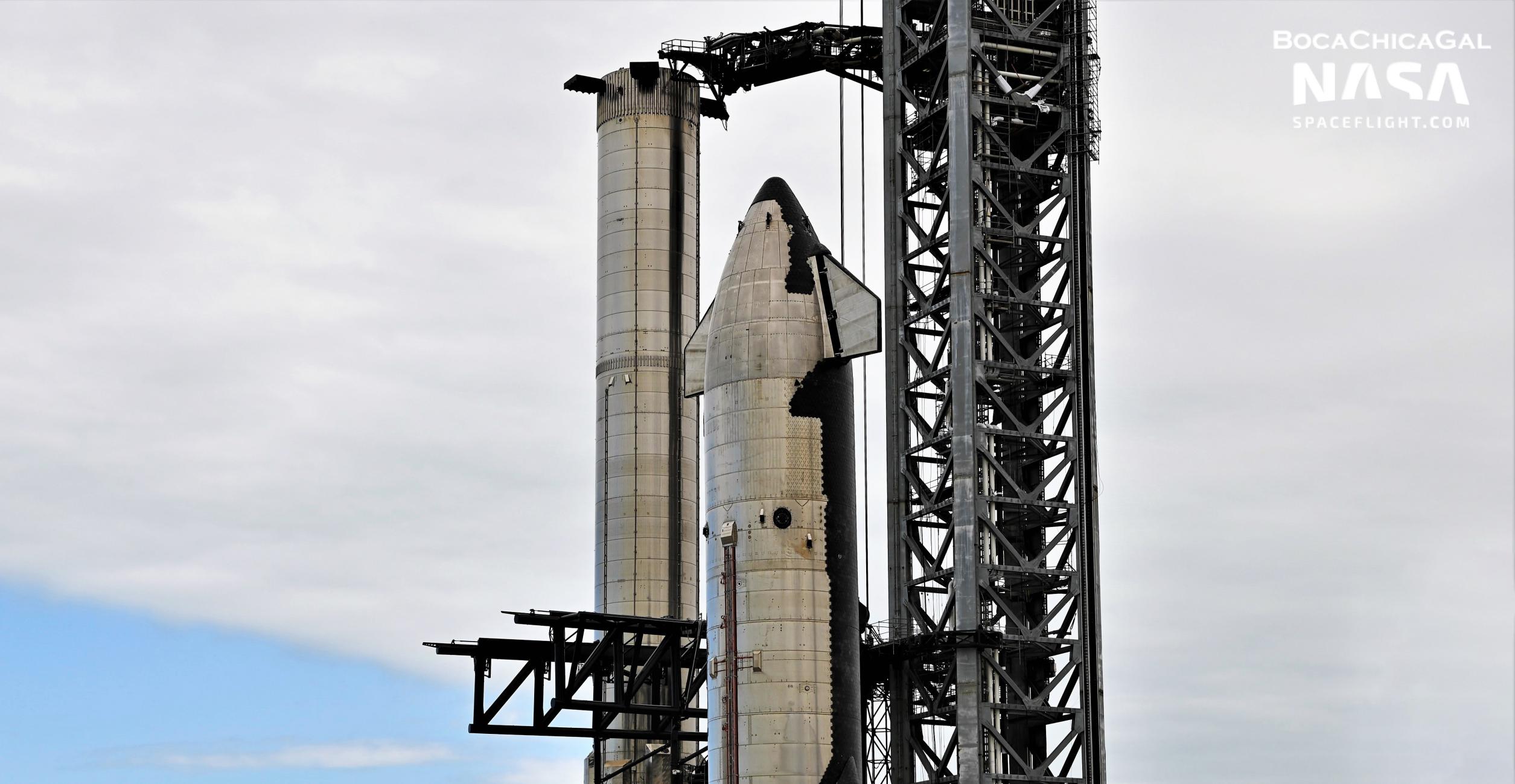
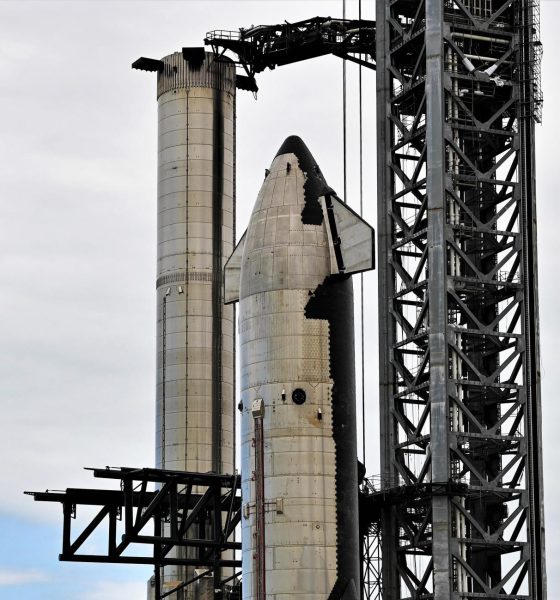
News
SpaceX preparing for third Starship ‘full stack’
SpaceX appears to be preparing Starship 20 and Super Heavy Booster 4 for their third ‘full stack’ demonstration after two seemingly successful tests in August 2021 and February 2022.
The first, completed in early August 2021, was mostly for show and saw SpaceX stack the unfinished prototypes with a giant crane – fighting the coastal winds throughout. After just a few hours stacked, Ship 20 was removed and returned to Starbase, where workers spent several more weeks (mostly) finishing the prototype. Booster 4 followed suit several weeks later and ultimately took another three months of work to reach some level of test readiness.
After Ship 20 and Booster 4 completed a series of tests in the last few months of 2021 and early 2022, the two were re-stacked in mid-February – once again for show. This time, the stacked Starship served as a backdrop for SpaceX CEO Elon Musk’s first official Starship presentation in more than two years. However, despite the fact that neither prototype was actually tested during the second stack, SpaceX did use the opportunity to partially debut Starbase’s ‘orbital launch integration tower’ and used that towers trio of giant arms to lift, stack, and stabilize Starship S20 on top of Super Heavy B4.
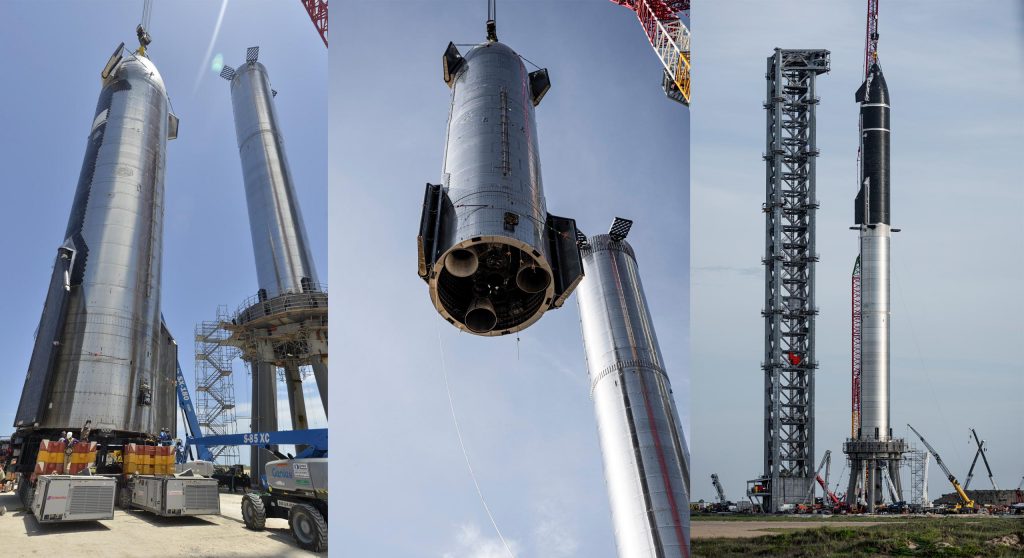
Ship 20 was ‘destacked’ with the tower’s arms just a few days after Musk’s event – an undeniably rapid and impressive achievement for the first real use of the ‘chopstick’ arms but still far from demonstrating that Ship 20, Booster 4, or the orbital launch site (OLS) are ready for orbital test flights. Since then, however, Starbase’s launch facilities have admittedly been almost as busy as they’ve ever been with Starship and Super Heavy cryoproof tests.
Ship 20 completed its first basic OLS cryogenic proof test or ‘cryoproof’ just two days after it was destacked. Additional Starship S20 cryoproofs followed on February 17th (the day after), February 22nd, and March 3rd. Super Heavy B4 completed its own cryoproofs on February 18th and March 1st, the latter of which may have actually been the fullest a Starship booster has ever been filled. All told, SpaceX completed no less than six major B4/S20 cryoproof tests in 15 days.
Crucially, all six cryoproofs were performed with Starbase’s nascent orbital tank farm, thoroughly testing its storage and distribution capabilities. Additionally, because SpaceX began liquid methane deliveries on February 13th, some of those tests – particularly with Ship 20 – may have even been proper wet dress rehearsals, meaning that SpaceX may have filled the rocket(s) with liquid methane (LCH4) and liquid oxygen (LOx) propellant to replicate preparations for a real launch.
At a minimum, Super Heavy Booster 4’s oxidizer tank was fully filled with liquid oxygen – and possibly pressurized with hot gaseous oxygen – during its March 1st cryoproof, while its fuel tank was filled about two-thirds of the way either with liquid nitrogen (LN2) or methane. Prior to its February and March tests, Booster 4 had already completed three cryoproofs – some also using LOx – in December 2021. Ship 20 had completed a cryoproof and four static fire tests.
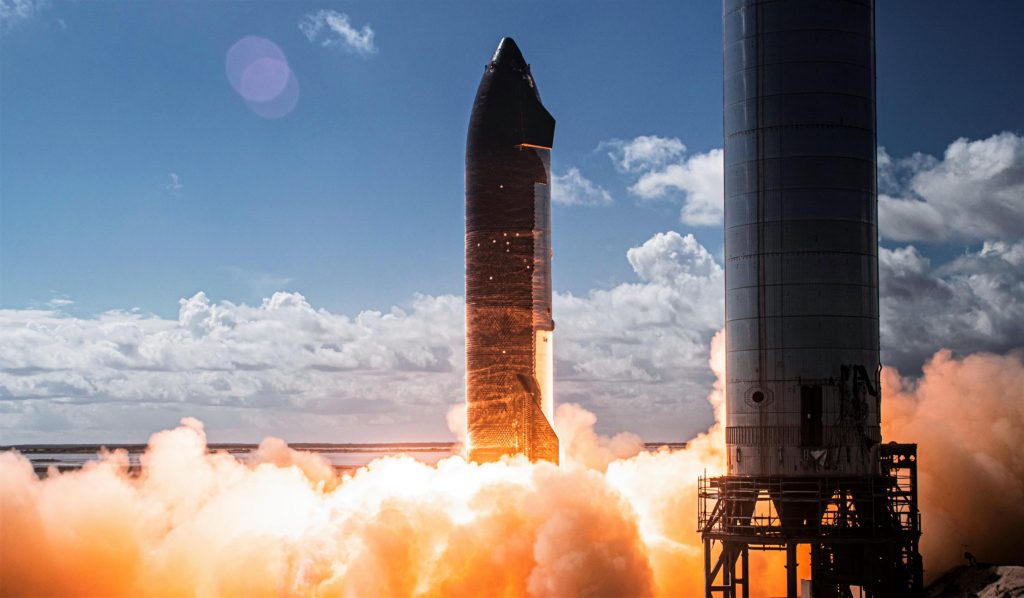
All told, short of finally performing a full Super Heavy wet dress rehearsal and static fire at the orbital launch site, it’s not all that clear what more SpaceX can derive from additional individual cryoproof testing of Ship 20 or Booster 4. Several things do still need to be demonstrated, however. First, the OLS launch tower has yet to use its arms to remotely install a Super Heavy on the orbital launch mount. More importantly, SpaceX has yet to use the launch tower and its swinging ship umbilical arm to cryoproof or fuel a Starship while stacked on top of a Super Heavy. Finally, SpaceX has also yet to simultaneously perform a cryoproof or wet dress rehearsal test of a stacked Starship and Super Heavy, which will be necessary for orbital test flights.
One or several of those to-be-completed tests may be why SpaceX appears to have begun preparing to install Ship 20 on top of Booster 4 for the third time. On March 14th, Starship S20 was moved towards the launch tower and on March 15th, the ship was slotted between its ‘chopstick’ arms. Based on stack #2, the ship could be lifted at any point – day or night – and installed on top of Super Heavy in a matter of hours.

Elon Musk
Tesla CEO Elon Musk sends rivals dire warning about Full Self-Driving
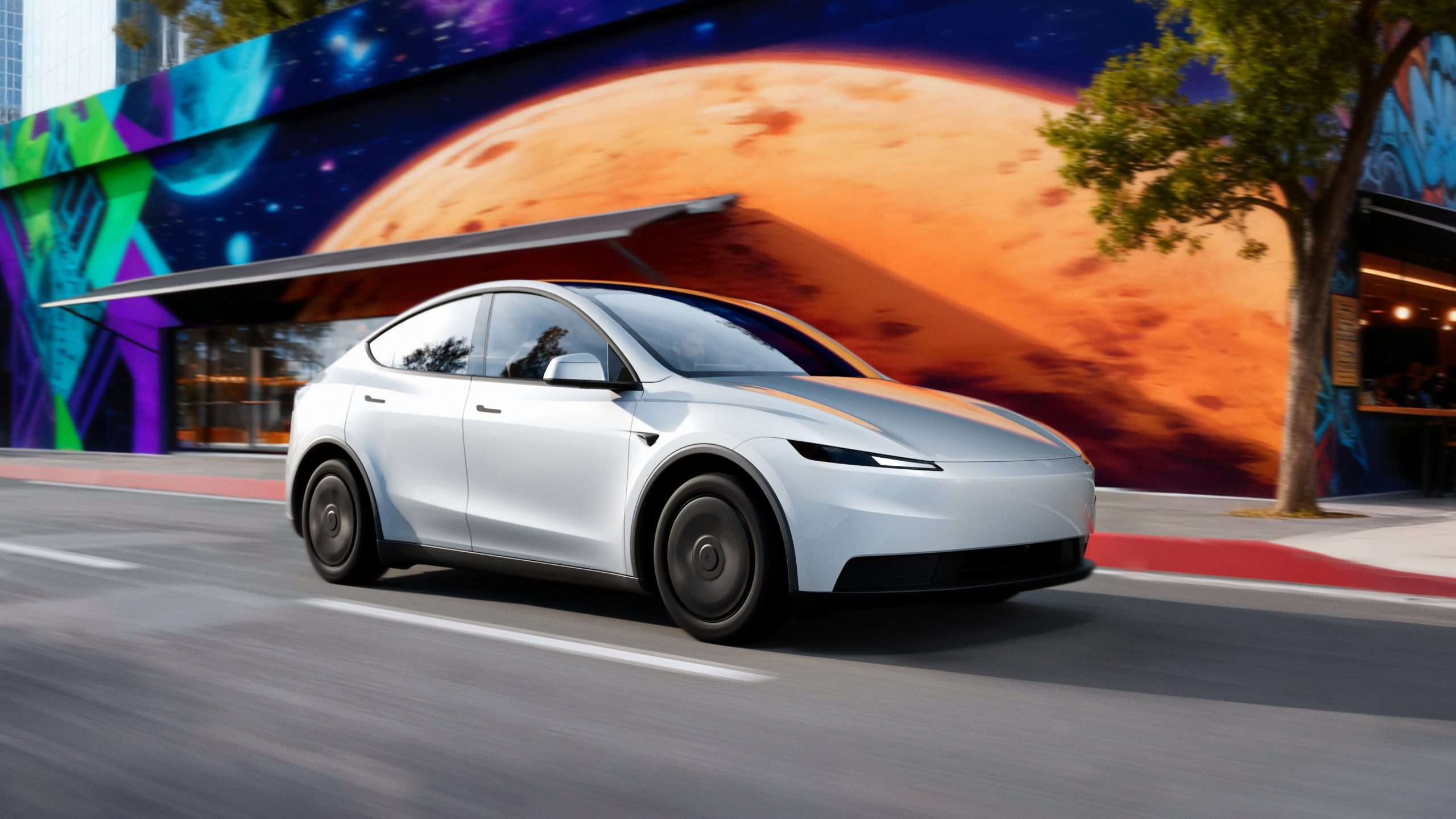
Tesla CEO Elon Musk revealed today on the social media platform X that legacy automakers, such as Ford, General Motors, and Stellantis, do not want to license the company’s Full Self-Driving suite, at least not without a long list of their own terms.
“I’ve tried to warn them and even offered to license Tesla FSD, but they don’t want it! Crazy,” Musk said on X. “When legacy auto does occasionally reach out, they tepidly discuss implementing FSD for a tiny program in 5 years with unworkable requirements for Tesla, so pointless.”
I’ve tried to warn them and even offered to license Tesla FSD, but they don’t want it! Crazy …
When legacy auto does occasionally reach out, they tepidly discuss implementing FSD for a tiny program in 5 years with unworkable requirements for Tesla, so pointless. 🤷♂️
🦕 🦕
— Elon Musk (@elonmusk) November 24, 2025
Musk made the remark in response to a note we wrote about earlier today from Melius Research, in which analyst Rob Wertheimer said, “Our point is not that Tesla is at risk, it’s that everybody else is,” in terms of autonomy and self-driving development.
Wertheimer believes there are hundreds of billions of dollars in value headed toward Tesla’s way because of its prowess with FSD.
A few years ago, Musk first remarked that Tesla was in early talks with one legacy automaker regarding licensing Full Self-Driving for its vehicles. Tesla never confirmed which company it was, but given Musk’s ongoing talks with Ford CEO Jim Farley at the time, it seemed the Detroit-based automaker was the likely suspect.
Tesla’s Elon Musk reiterates FSD licensing offer for other automakers
Ford has been perhaps the most aggressive legacy automaker in terms of its EV efforts, but it recently scaled back its electric offensive due to profitability issues and weak demand. It simply was not making enough vehicles, nor selling the volume needed to turn a profit.
Musk truly believes that many of the companies that turn their backs on FSD now will suffer in the future, especially considering the increased chance it could be a parallel to what has happened with EV efforts for many of these companies.
Unfortunately, they got started too late and are now playing catch-up with Tesla, XPeng, BYD, and the other dominating forces in EVs across the globe.
News
Tesla backtracks on strange Nav feature after numerous complaints

Tesla is backtracking on a strange adjustment it made to its in-car Navigation feature after numerous complaints from owners convinced the company to make a change.
Tesla’s in-car Navigation is catered to its vehicles, as it routes Supercharging stops and preps your vehicle for charging with preconditioning. It is also very intuitive, and features other things like weather radar and a detailed map outlining points of interest.
However, a recent change to the Navigation by Tesla did not go unnoticed, and owners were really upset about it.
For trips that required multiple Supercharger stops, Tesla decided to implement a naming change, which did not show the city or state of each charging stop. Instead, it just showed the business where the Supercharger was located, giving many owners an unwelcome surprise.
However, Tesla’s Director of Supercharging, Max de Zegher, admitted the update was a “big mistake on our end,” and made a change that rolled out within 24 hours:
The naming change should have happened at once, instead of in 2 sequential steps. That was a big miss on our end. We do listen to the community and we do course-correct fast. The accelerated fix rolled out last night. The Tesla App is updated and most in-car touchscreens should…
— Max (@MdeZegher) November 20, 2025
The lack of a name for the city where a Supercharging stop would be made caused some confusion for owners in the short term. Some drivers argued that it was more difficult to make stops at some familiar locations that were special to them. Others were not too keen on not knowing where they were going to be along their trip.
Tesla was quick to scramble to resolve this issue, and it did a great job of rolling it out in an expedited manner, as de Zegher said that most in-car touch screens would notice the fix within one day of the change being rolled out.
Additionally, there will be even more improvements in December, as Tesla plans to show the common name/amenity below the site name as well, which will give people a better idea of what to expect when they arrive at a Supercharger.
News
Dutch regulator RDW confirms Tesla FSD February 2026 target
The regulator emphasized that safety, not public pressure, will decide whether FSD receives authorization for use in Europe.
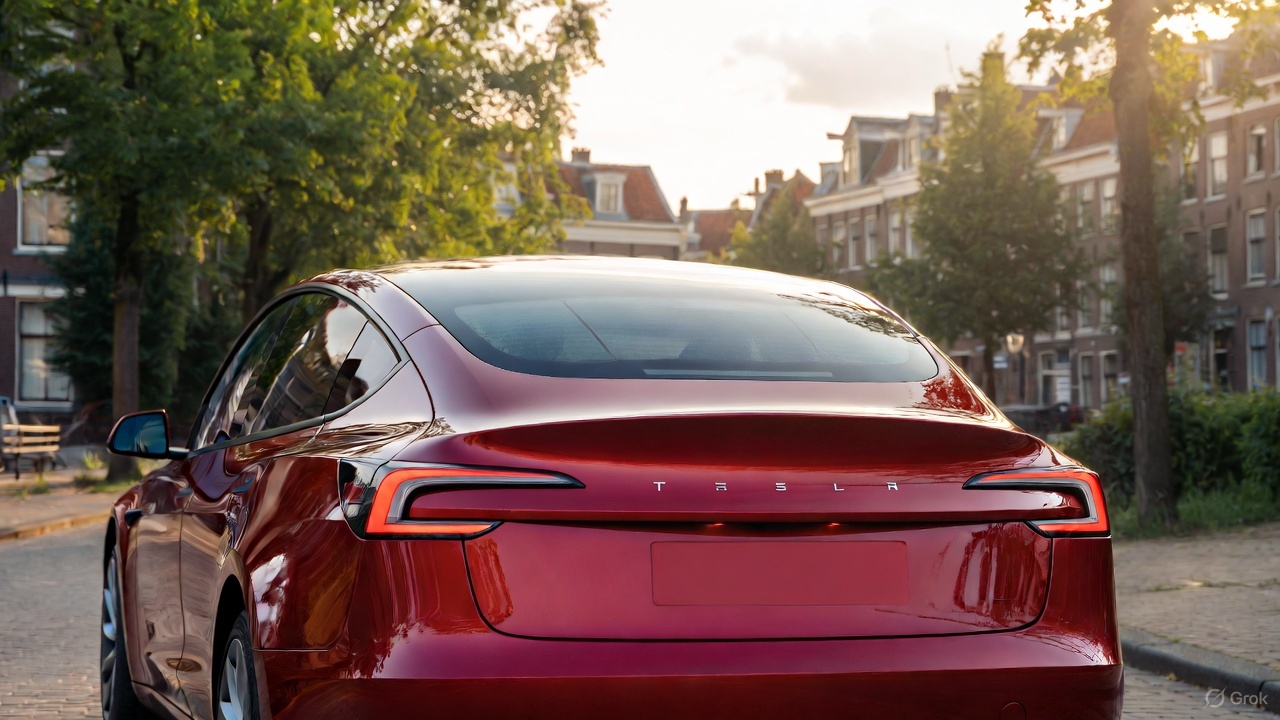
The Dutch vehicle authority RDW responded to Tesla’s recent updates about its efforts to bring Full Self-Driving (Supervised) in Europe, confirming that February 2026 remains the target month for Tesla to demonstrate regulatory compliance.
While acknowledging the tentative schedule with Tesla, the regulator emphasized that safety, not public pressure, will decide whether FSD receives authorization for use in Europe.
RDW confirms 2026 target, warns Feb 2026 timeline is not guaranteed
In its response, which was posted on its official website, the RDW clarified that it does not disclose details about ongoing manufacturer applications due to competitive sensitivity. However, the agency confirmed that both parties have agreed on a February 2026 window during which Tesla is expected to show that FSD (Supervised) can meet required safety and compliance standards. Whether Tesla can satisfy those conditions within the timeline “remains to be seen,” RDW added.
RDW also directly addressed Tesla’s social media request encouraging drivers to contact the regulator to express support. While thanking those who already reached out, RDW asked the public to stop contacting them, noting these messages burden customer-service resources and have no influence on the approval process.
“In the message on X, Tesla calls on Tesla drivers to thank the RDW and to express their enthusiasm about this planning to us by contacting us. We thank everyone who has already done so, and would like to ask everyone not to contact us about this. It takes up unnecessary time for our customer service. Moreover, this will have no influence on whether or not the planning is met,” the RDW wrote.
The RDW shares insights on EU approval requirements
The RDW further outlined how new technology enters the European market when no existing legislation directly covers it. Under EU Regulation 2018/858, a manufacturer may seek an exemption for unregulated features such as advanced driver assistance systems. The process requires a Member State, in this case the Netherlands, to submit a formal request to the European Commission on the manufacturer’s behalf.
Approval then moves to a committee vote. A majority in favor would grant EU-wide authorization, allowing the technology across all Member States. If the vote fails, the exemption is valid only within the Netherlands, and individual countries must decide whether to accept it independently.
Before any exemption request can be filed, Tesla must complete a comprehensive type-approval process with the RDW, including controlled on-road testing. Provided that FSD Supervised passes these regulatory evaluations, the exemption could be submitted for broader EU consideration.








